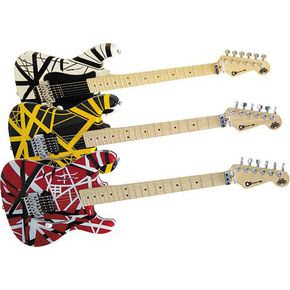Celebrity Ovation Serial Numbers
Dating a guitar can be a difficult experience, but knowing the date can be the most important step in selling or trading your guitar. Maybe you are just curious about the date of your Ovation Celebrity. After all, according to Ovation.com (reference 1), they've been making their signature curved-back guitars since 1966. Serial Number The serial number will be a set of numbers and letters separated by dashes. It is typically found inside the body underneath the strings. But sometimes they put it on the back of the neck.

For some Ovation guitars, only the first few numbers of the serial will tell you the date. But for those special Ovations, if you record the entire serial, you can find out tons of neat information about your guitar.
For instance, you can find the original bowl depth, type, mode and color of the guitar. You will not know if your Ovation is one of these special ones until you are looking up the serial number. Note that you will only be able to date your Ovation guitar if it was built in the U.S. Ovation web site FAQ's The charts on OvationGuitars.com will help you identify when your guitar was made, from when the company began in 1966 to the present. Navigate to the FAQs (frequently asked questions) section of the web site. Make sure you don't accidentally go to Ovation.com. Finding the FAQs button can be a little tricky.
Hover your mouse over the 'support' button, then click on the FAQs button once the drop-down box appears. Click on the second orange link that says 'Click Here' once you are on the FAQs page. 'Cracking the Code' charts You should be looking at a series of number ranges. These are the serial numbers. If you look up at the widget in the top right of the page, you should notice that there are separate charts for three-, four- and six-digit serial numbers. Make sure you are looking at the chart with the correct number of serial number digits or you could improperly date your instrument. There are also separate charts for Adamas and Collector's series guitars.
Find where your serial number fits into the range in the left column, then match it up with the year in the right column. You've now found the year your guitar was made.
This is my personal website for displaying photos of my various Ovation guitars. Several of the slotheads over on the serial number.
Buku Panduan Belajar Piano Pdf Torrent on this page. Select Category OVATION Instruments currently produced in China, Korea, and Indonesia. Previously built in New Hartford, CT between 1967 and 2014.
Distributed by KMC Music in Bloomfield, CT. The Ovation guitar company, and the nature of the Ovation guitar´s synthetic back are directly attributed to founder Charles H. Kaman´s experiments in helicopter aviation. Kaman, who began playing guitar back in high school, trained in the field of aeronautics and graduated from the Catholic University in Washington, D.C. His first job in 1940 was with a division of United Aircraft, home of aircraft inventor Igor Sikorsky. In 1945, Kaman formed the Kaman Aircraft Corporation to pursue his helicopter-related inventions. As the company began to grow, the decision was made around 1957 to diversify into manufacturing products in different fields.
Kaman initially made overtures to the Martin company, as well as exploring both Harmony and Ludwig drums. Finally, the decision was made to start fresh. Due to research in vibrations and resonances in the materials used to build helicopter blades, guitar development began in 1964 with employees John Ringso and Jim Rickard.
In fact, it was Rickard´s pre-war Martin D-45 that was used as the 'test standard.' In 1967, the Ovation company name was chosen, incorporated, and settled into its 'new facilities' in New Hartford, Connecticut.
The first model named that year was the Balladeer. Ovation guitars were debuted at the 1967 NAMM show. Early players and endorsers included Josh White, Charlie Byrd, and Glen Campbell. Piezo pickup equipped models were introduced in 1972, as well as other models. During the early 1970s, Kaman Music (Ovation´s parent company) acquired the well-known music distributors Coast, and also part of the Takamine guitar company. By 1975, Ovation decided to release an entry level instrument, and the original Applause/Medallion/Matrix designs were first built in the U.S. Before production moved into Korea.
In 1986, Kaman's oldest son became president of Kaman Music. Charles William Bill Kaman II had begun working in the Ovation factory at age 14. After graduating college in 1974, Bill was made Director of Development at the Moosup, Connecticut plant. A noted Travis Bean guitar collector (see Kaman´s Travis Bean history later in this book), Bill Kaman remained active in the research and development aspect of model design. Kaman helped design the Viper III, and the UK II solid bodies. Bill Kaman gathered all branches of the company under one roof as the Kaman Music Corporation (KMC) in 1986.
As the Ovation branch was now concentrating on acoustic and acoustic/electric models, the corporation bought the independent Hamer company in 1988 as the means to re-enter the solid body guitar market. In 2007, Ovation returned from nearly twenty years in electric hiatus with the VXT Hybrid model. This guitar has both acoustic and electric capabilities with two exposed humbucker pickups and a Fishman bridge pickup. In late 2007, the Fender Musical Instrument Corporation (FMIC) acquired Kaman Music, which included Ovation. In 2008, Kaman Music changed the name of their company to KMC Music. On January 31, 2011 Charles Kaman passed away at the age of 91. In June 2014, Fender closed the Ovation factory in Connecticut leaving only overseas production of Ovation guitars.
Source: Walter Carter, The History of the Ovation Guitar. From Blue Book Publications.